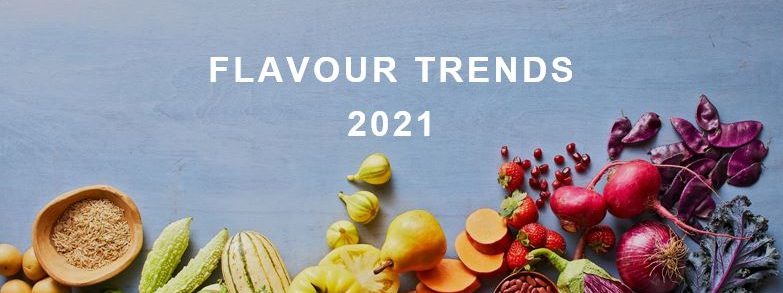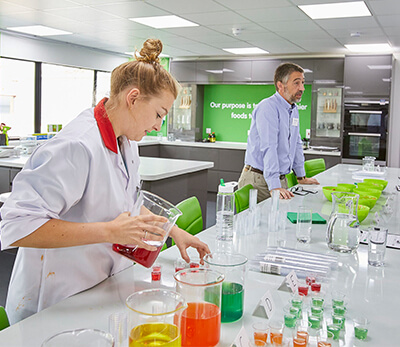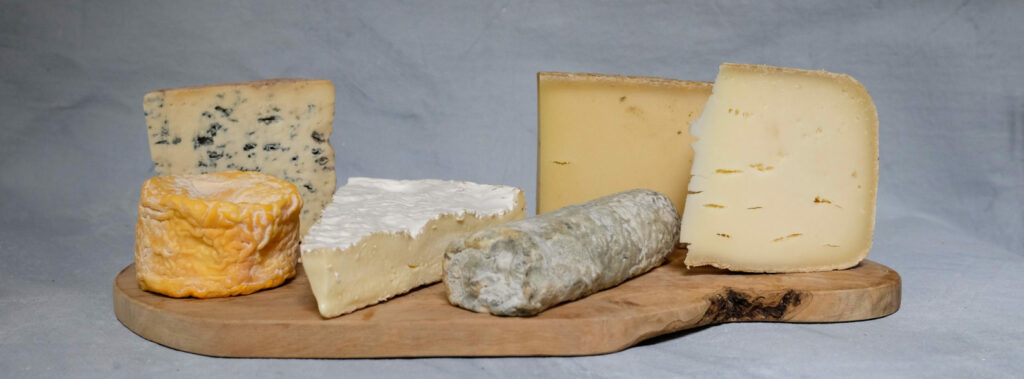When is the last time you reviewed your core flavour range? Our Head of Innovations, Carl Smith discusses why it is important to keep your core range refreshed.
Most food and beverage manufacturers have a core range of flavourings within their ingredient portfolio. They rely heavily on these to deliver great taste in a wide range of applications. Often, these flavourings will have been in place and remained unchanged for many years mainly because they historically define the taste and establish the signature and character of the product.
So, when did your core vanilla flavouring last have a health check?
Most people see the doctor or dentist at least once a year (or did, when we were allowed to go out) to make sure that things are working properly and we can function as we would like. Our cars have regular services and MOT checks, if the tracking was out or a spark plug was misfiring, then the car would not perform to the best of its ability.
Strange analogies maybe, but the food industry is a continuously changing environment and products and ingredients that have probably been taken for granted over many years might actually be a bit tired and neglected. If looked at critically, you might even notice that your market-leading chocolate cookie or banana flavoured milkshake no longer stands out as the best in class, now that it is fighting for shelf space with much more competition and some very clever copies – some discount retailers are very good at this indeed (naming no names).
Many food manufacturers will use a core flavouring such as a chocolate, strawberry, vanilla, banana across a number of product applications and in many cases, will have done so for several years, but do they ever consider if anything has changed over that period of time? Chances are, a great deal has, let’s have a look.
Flavouring cost reduction opportunities
Developers will most likely have been asked to remove 10-15% of the cost out of a product at least once over its life. This usually starts by taking a look at the most expensive ingredients in a product formulation and cutting them back. Well, flavourings usually fall into this category and find their levels being adjusted which will impact on taste.
However, reduction, replacement or reformulation will all impact the performance and taste of a product if the flavouring itself is not considered. By talking to the flavour house, it is usually possible to make easy adjustments to the flavouring allowing continuity of taste and performance in the new formulation.
Flavourings that offer sugar & fat reduction
These have been hot topics for a few years now and manufacturers had no option but to react as these have been driven by the Government and the large retailers. As most people know, fat and sugar play enormous roles in food products across many sectors – bakery, snacks, beverage, dairy.
They are multifunctional in terms of their contribution to texture, mouthfeel and taste. Removal of 30% sugar or 10% fat from a product will potentially have a significant impact on the ability of a flavouring to deliver, it may well need strengthening or adjusting so that it is able to continue to perform well in the “new environment”.
New and improved flavouring ingredients
Food and beverage manufacturers must be able to use more than one supplier to source their materials. Ingredients are purchased (usually) to a specification which means that most of the time there is little impact when switching between one supplier and another.
There are occasions, however, when this is not the case. An example of this would be something like pea protein, which is probably one of the most in-demand ingredients within the industry at the current time. The quality of pea protein has improved dramatically in recent years, however, there are still significant differences in quality from supplier to supplier.
Pea variety, protein content, extraction method, particle size are just a few of the factors that will affect the quality of pea protein. In food products designed around pea protein, the flavouring is asked to do more than just deliver good taste. In order to do that, it must first mask any undesirable flavour notes coming from the pea protein, then build taste on top of that.
If a particular chocolate flavouring was selected at the time the product was developed, then if, for one reason or another, a change of pea protein is subsequently made, there will most likely be the need to take a look at the flavouring to make sure that it will still deliver the same characteristic taste.
Changes in the flavouring ingredient supplier chain
Many manufacturers are looking to improve their “Green credentials” and a large part of this involves reducing carbon footprint. Consequently, localised supply is becoming of greater importance, particularly in the UK post-Brexit. The decision to work with new suppliers is very seldom taken by the product developers, so, although there might be strong benefits from a purchasing and logistical perspective, it may well present technical problems in other areas. An example of this might be being presented with a range of new flavourings to be used instead of the current products.
It is not difficult to see that this could lead to the need for some intricate (and urgent!) re-formulation and some interesting conversations with the flavour house about how the product can be made to taste the same as it was before.
Changes in the flavouring manufacture process
Process equipment and regimes do often change during the life cycle of a product. Sometimes it might be necessary to make small formulation changes to accommodate new bake time/temperatures or even changes of energy input from a new mixer. In most cases, this forms part of the commissioning process.
Similarly, the performance of process equipment can also change with age and compensations have to be made. Sometimes very small changes can have significant impacts on the performance of food ingredients, in particular flavourings, so it is important to review things periodically and decide if your flavouring is still performing as you would expect.
Flavouring trends are constantly changing and evolving
In a world where new and exotic flavours are far more accessible than they have ever been, customer taste expectations are now more demanding than ever. It’s not so long ago that “vanilla was vanilla was vanilla” and the sweet, creamy, ice cream type vanilla profile characterised a large proportion of vanilla flavoured bakery and confectionery products.
Now, more than ever, it is important to ask the question “Is the profile of my vanilla right for today’s market?”. What do we mean by profile?, well, profile relates to the more specific characters of a flavouring, so, in the case of Vanilla it could be sweet, creamy, buttery, caramel, smokey, “Bourbon”, custard….. and many more. In the hands of skilled flavourists, these characters can easily be adjusted within a flavouring in order to better suit a customer’s requirements.
Don’t stand still, because consumers won’t wait
It is more important than ever to “refresh” core flavourings, we have seen through lockdown that some of the large retailers are beginning to follow the discounters in reducing the number of SKUs on the shelves, increasing the competition for space and the ability to stand out.
As discussed, there are many factors that can change (some obvious, some not so) that can affect the performance and acceptability of taste in a food product. If manufacturers don’t react then they will risk losing market share and the consequences that follow from that.
Vanilla, strawberry and chocolate flavourings are here to stay but you might just need to ask yourself if your core versions are fully prepared for today’s product and processing applications, or do they need an MOT?
Get in touch to speak to our team to see how we can help review your core range.










